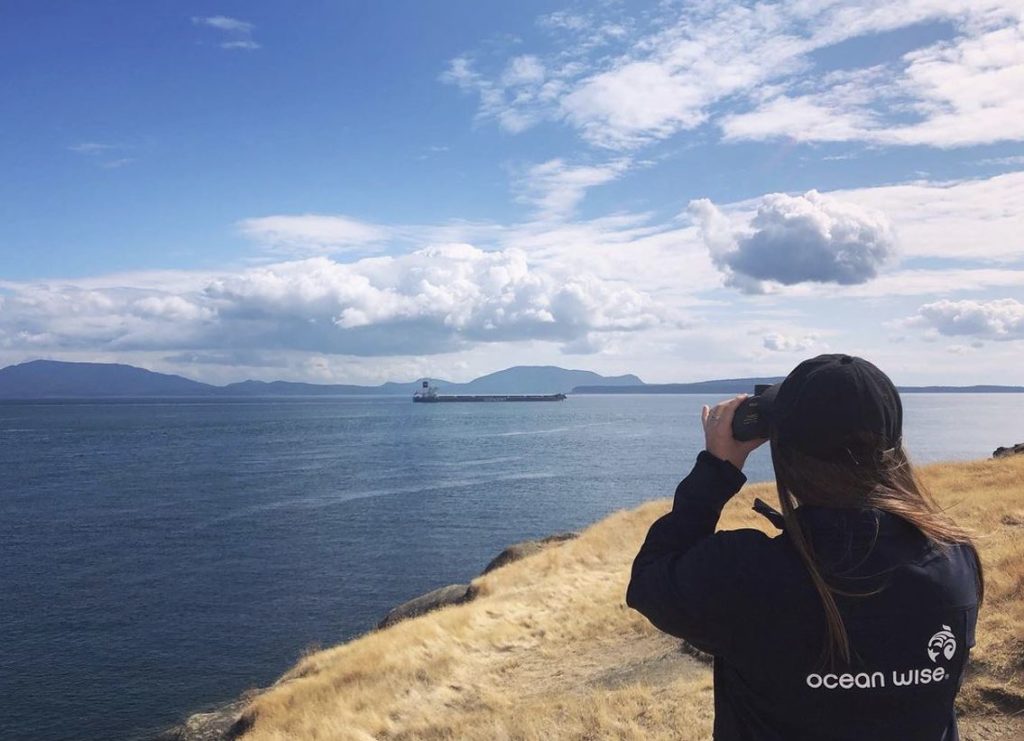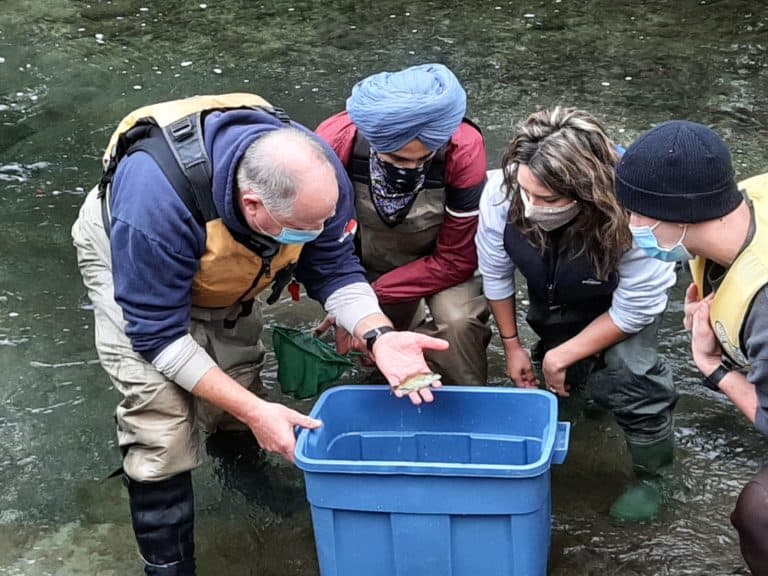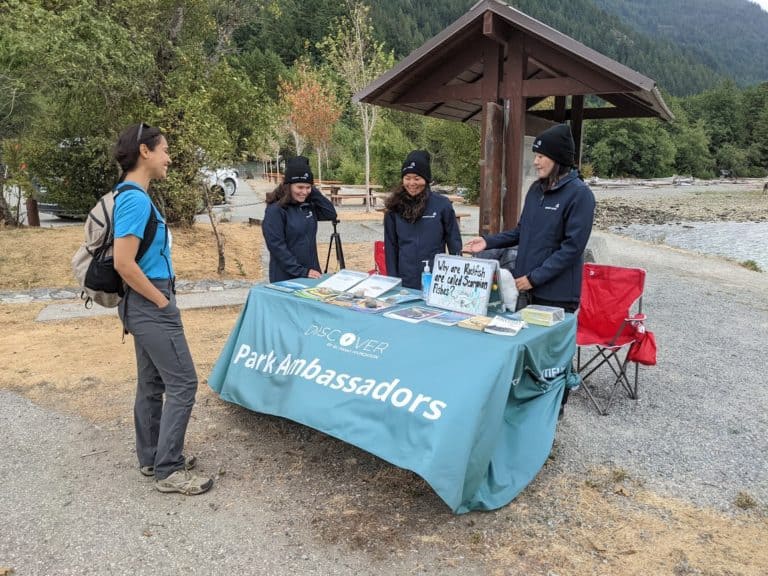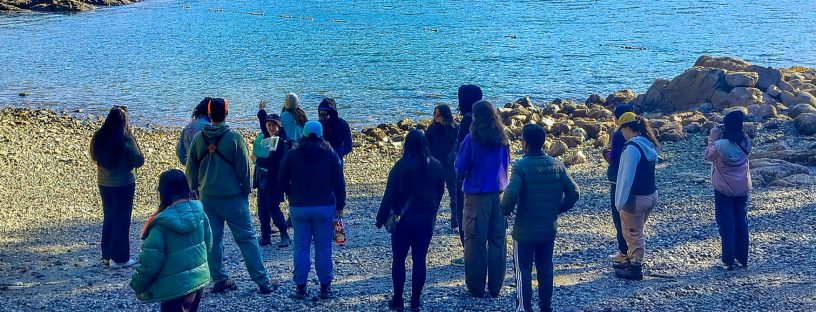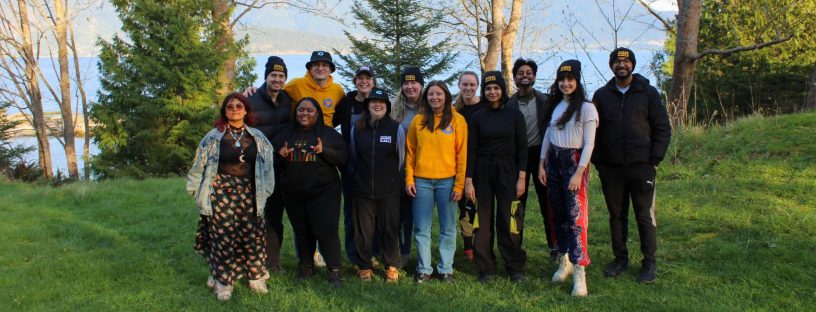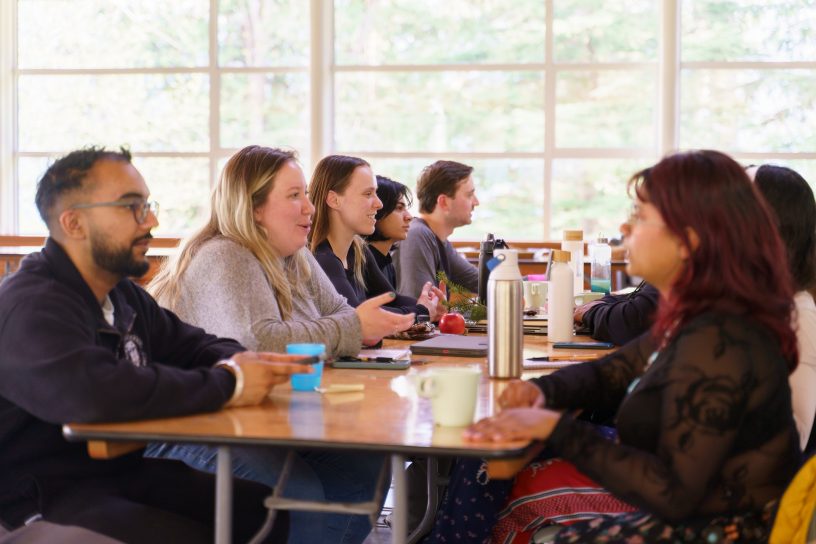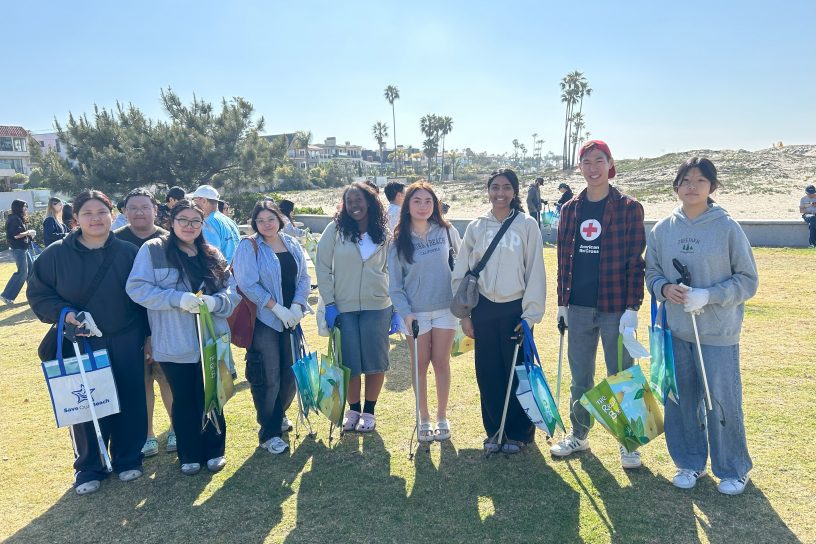A Day in the Life: Black Oystercatcher Banding
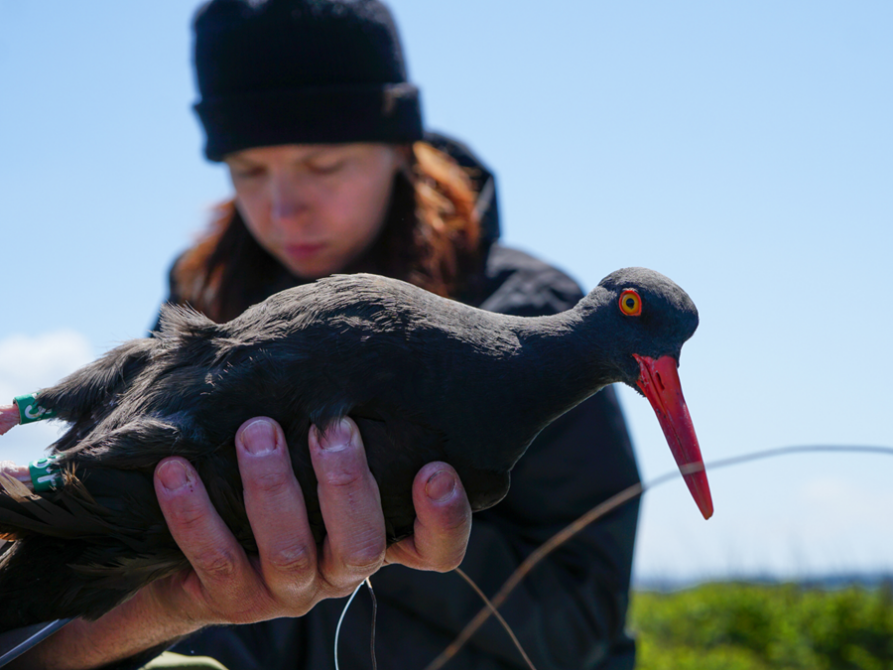
By: Jen Willoughby
Photo credit: Raincoast Education Society
Ocean Wise’s Direct Action program places 30 young people in immersive field based educational projects working with government organizations and research partners throughout Canada. Direct Action Ambassador, Jen Willoughby, completed her placement with Raincoast Education Society in July 2022. Some of the projects that Jen has been able to take part in are salmon stomach collection, banding black oystercatchers, and outreach and education. In this blog Jen takes us through a day in the life black oystercatcher banding, as part of her Direct Action placement.
7:30 am
Time to wake up. Luckily the boat ride from the Ucluelet harbour to the islands in the Broken Group, where the banding takes place, isn’t long. This means the start of the day isn’t too early (hurray!). There is lots of time to eat a good breakfast, pick out weather appropriate clothing and prepare my daypack. At this time, the team is normally in contact to discuss if the water conditions and weather will be suitable for banding black oystercatchers.
9:00 am
Time to meet the team at the harbour and prepare to take off. The specific island we will be heading to is determined based on water and weather conditions. We then make sure all the equipment needed is in the boat before heading out to fill up on gas.
The scenery is breath-taking, as though it was a photo taken out of a National Geographic magazine. The sun is shining through the clouds, a strong breeze is coming off the Pacific Ocean, and I can see snowy peaked mountains in the distance. We pass by many aquatic bird species, such as pigeon guillemots and marbled murrelets. Some days we are lucky enough to see a humpback whale and white-sided dolphins!
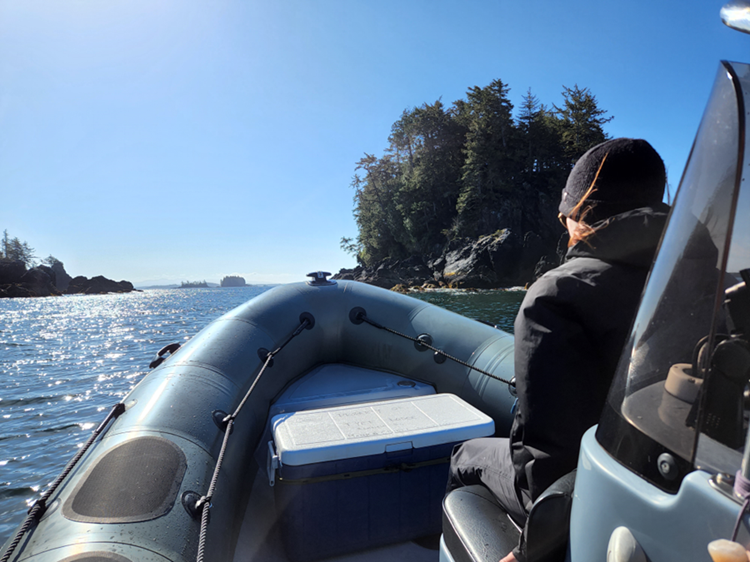
10:00 am
We arrive at the island, circling around until we find the best place to anchor, while keeping an eye out for black oystercatchers. Once the anchor is set in accordance with the water conditions, we grab our things and jump ashore.
First things first; locate the best place to set the traps. The traps used are called nooses. Pieces of clear fishing line are used to make nooses that are attached to a metal wire. Basically, they are like tiny invisible lassos that get caught on the bird’s feet as they walk through them. The metal wire is weighted down to the ground so that the bird cannot fly away. The nooses are typically either set along the shore or near a nest. Once they are set, we find a place to hide. It must be close enough that we can run to the bird once it is trapped, but also far enough that we won’t disturb the bird. We need to have a clear line of view of the nooses, but also be hidden from the bird’s view.

The next thing we did was choose a bird’s nest to lay the trap nearby. The closer an egg is to hatching, the faster it will be to catch a bird. This is because the birds are more invested in seeing the eggs hatch so they will visit the nest more often. It may take more than one visit to the nest for a bird to become caught. A good part of the day is spent waiting. You never know how long it may take for a bird to get trapped. This means you need a lot of patience. It helps to have a spot to sit that isn’t too uncomfortable! Also, make sure your water and snacks are close by!
11:30 am
Still waiting. A couple of birds have come within a meter or so but haven’t walked through the noose yet. The view is great and there are often seals swimming around, so who can complain! It is also fun and fascinating to watch the bird’s behaviours.

12:00 am
We caught one! One of the team members quickly runs to collect the bird and noose. They bring it back to the area that has all the tools to put on the bands. In addition to putting the bands around the bird’s legs, we also record measurements. For example: culmen length, tarsus length, tail length, and weight. We also take photos of their wings and eyes. Lastly, we take a toenail clipping. This is because their toenails contain stable isotopes that will be sent off to the lab. When handling the bird, you want to be efficient and quiet to minimize stress. Once the data has been collected and the bird has been banded, we release it. You basically just toss the bird lightly up into the air and it flies away.

Now, we reset the nooses on the same nest because we are going to try to trap this bird’s mate.
1:00 pm
We are still waiting on the mate.
1:30 pm
The mate has approached the nest and sat on its eggs. We wait a minute or so before slowly standing up so that the bird sees us. We want it to get scared enough to walk off the nest, but not scared enough to fly off. Walking off means there is a higher chance its feet will get caught in the nooses.
1:35 pm
We caught the mate! The same measurements are taken, the bird is banded, and we note down that the two band numbers correspond to a mating pair.
We then search for another nest, find one, reset the traps, find a place to hide, and hunker down for another opportunity to band.

3:00 pm
An oystercatcher landed about a meter away from the nest, but then a glaucous-winged gull landed by it, scaring it away.
4:00 pm
We are still waiting for a bird to get close to the traps. This is how it goes sometimes. Patience is key.
5:00 pm
Both mates have gotten close, but still none have gotten caught in the nooses yet. They are walking right through them, but they managed to shake it off before getting caught. After they have shaken them off a couple times, we have to go grab the nooses to reset them. We make the mutual decision that we really want to catch this bird, so we keep waiting. It looks like it will be a longer day than first expected, but we feel we are close to catching it!
5:30 pm
We caught the third bird! Yay! There is a lot of satisfaction after catching one that you’ve had to wait so long for.
The measurements are taken, bands placed, and finally the bird is released.

6:00 pm
We have packed up all our belongings, double-checking that we haven’t left any item behind. We jump back into the boat and start heading home. Usually by this time of day the wind has picked up, causing a lot more waves that we have to fight through. This means the drive back is a bit longer and a lot bumpier. Usually, a slightly different route is taken closer to the shore to minimize the amount of wind we have to boat through.
8:00 pm
Back at the Ucluelet harbour! The workday is done!
Ocean Wise Youth The Ocean Wise Youth initiative consists of three programs; Ocean Bridge, Direct Action and YouthToSea, all of which provide hands-on ocean conservation and literacy skills and education. Learning from experts in marine conservation, and supported by Ocean Wise, youth are empowered to take action and become ambassadors for the ocean. Ocean Wise Youth programs are funded by the Government of Canada through Canada Service Corps. Learn more or become an ambassador: Youth Programs – Ocean Wise.
Direct Action This unique three-month work-placement program, provides 30 young people aged 18-30 with field-based and virtual conservation and communications projects. Youth work closely with established scientists, researchers, communicators, and educators on aquatic and marine ecology and conservation projects. Ambassadors also receive coaching sessions and training by Direct Action staff to build their capacity as ocean and freshwater leaders.
Canada Service Corps
Canada Service Corps is designed to generate a culture of service among young Canadians; concrete results for communities; personal growth through participation in a diverse team of peers; and lasting impacts on participants. Visit www.canada.ca/CanadaServiceCorps to learn more and how to get involved in the way that works best for you.
Posted August 26, 2022 by Ocean Wise
